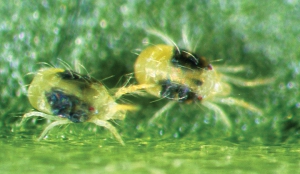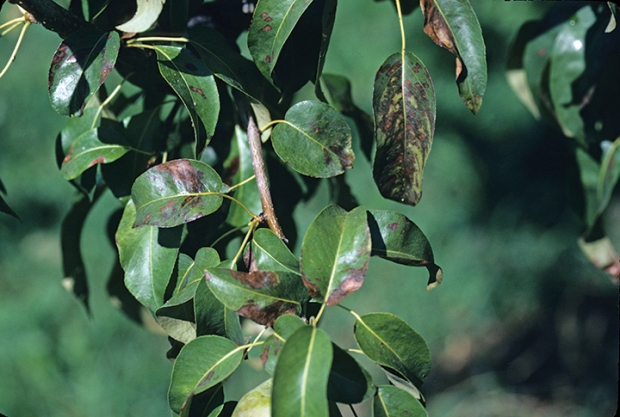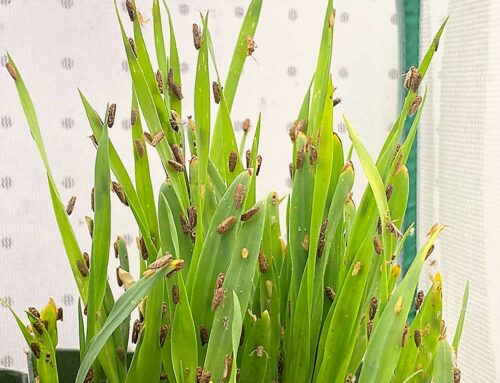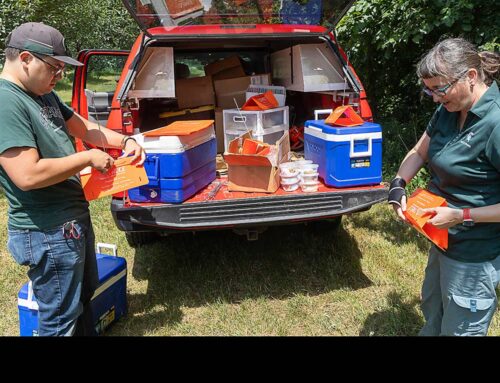It’s exactly a hundred years since Washington State College entomologist Dr. Alex Leonard Melander proposed the then-novel concept that insects could develop resistance to pesticides.
“It was the first time that anyone had brought up the idea that insects could be resistant to sprays,” Dr. Elizabeth Beers, Washington State University entomologist, reported during the North Central Washington Pear Day in January.
“You can’t just let them go and let the predators build up on them like you can on apple.”
—Dr. Elizabeth Beers
Pesticides had only recently been invented, and it was assumed that if a pesticide worked at that time, it would work forever, she said. But Melander suspected that San Jose scale had become resistant to lime sulfur sprays.
The tree fruit industry and scientists have been grappling with resistance ever since. Soon after joining WSU in 1985, Beers chaired a panel discussion at the Washington State Horticultural Association’s annual meeting on how to address resistance of mites.
“Apparently, nothing has changed since 1985,” Beers said, warning that spider mites are acquiring resistance to a current product called FujiMite. “We’re moving to the point where FujiMite will not be effective at the full rate.”
In 1985, the concern was resistance to Plictran (cyhexatin) and Vendex (fenbutatin-oxide), which were in a class of micitides known as organotins. When they first became available they were very effective, but as time went on, they became less and less effective. The panelists at the hort meeting proposed three ways to respond to this:
- Use a higher rate or apply more often.
- If an acaricide doesn’t work, combine it with another in the hope that the two together will do a better job. For example, carbamate insecticides could be combined with with organotins to increase efficacy.
- Switch to a new product.
“We’ve been repeating this cycle for the past 30 to 40 years and it’s tough to break the cycle,” Beers said, stressing the need to avoid the development of resistance in the first place.

Two-spotted spider mites are a mere sixtieth of an inch long but are a big concern for pear growers. (Courtesy Elizabeth Beers)
In 1988, Agri-Mek (abamectin) became available under a section 18 emergency exemption for control of mites and pear psylla. Growers found that it killed both pests with one to two applications and kept the orchard clean for the rest of the season. By 1990, 93 percent of the pear growers in the Wenatchee area were using the product and the rest were probably organic growers, Beers said. Though expensive, it was cost-effective because it solved growers’ problems in one fell swoop.
Beers’s bioassays show that in 1990, Agri-Mek applied at a rate of 0.005 parts per million would kill 99 percent of a spider mite population. But during the 1990s, mites began to develop resistance. “It was a red flag, but by no means did it mean we were looking at field failures at that time,” she said.
By 1998, in her tests, it took a rate of 0.016 ppm (three times the previous rate) to kill 90 percent of the spider mites. Tests in 2011 showed that a rate of 0.5 ppm was totally ineffective. In 2012, a rate of 5 ppm (100 times the original rate) killed about 17 percent of the mites. By 2013, a rate of 30 ppm was ineffective, and it took 4500 ppm (900,000 times the original does) to kill 99 percent of the mites.
“I’ve never seen resistance ratios that high in my career,” Beers said. “I’ve never heard of them in other crops.”
Biological control
The primary tactic for controlling mites on apples is biological control with the predatory mites Galendromus occidentallis (known as typhs), but this strategy doesn’t work well for pears. To allow biological control to happen, growers have to back away from sprays that are toxic to typhs and accept some build-up of mites until the typhs take care of the problem. But the number-one pear variety in Washington, d’Anjou, is more sensitive to mite damage than any apple cultivar, Beers said. When mite infestations are high, pear leaves can turn black and drop off if they’re subject to heat stress.
“You can’t just let them go and let the predators build up on them like you can on apple,” she said.
The other problem is that pear psylla also needs to be controlled in pears.
Resistance survey
Last year, Beers began a research project to survey the level of resistance to current miticides and found evidence that mites are becoming less susceptible to FujiMite.
“We’ve heard rumors from the field that miticides aren’t working any more,” she said. “We have historical data to compare them to, and we’re going back and checking the current status with the historical data. I think we’re getting closer to the edge with FujiMite, but we’re not over the edge as with Agri-Mek,” she said.
Rotating chemical classes is still the best way to avoid resistance and growers have miticides from five chemical classes they can use today, Beers said. A problem, however, is that miticides that also control psylla (as do Agri-Mek and FujiMite) in effect become psyllicides and tend not to be rotated properly for miticide purposes. •







Leave A Comment